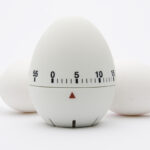About Fertility
What is Ovarian Reserve and What Does it Mean?

How Many Eggs Do I Have?
The number of oocytes (eggs) a woman has reaches a maximum of approximately 8 million when she was a 20 week fetus. By the time that woman reaches puberty approximately 500 oocytes remain. Oocytes are lost every day in a process known as atresia. In some women this process is accelerated and especially with increasing age. Many often ask us what is ovarian reserve and what does it mean? As the number of oocytes decrease so does the quality of the remaining eggs. Poor oocyte quality is characterized by a reduction in oocyte fertilization, subsequent embryo development, and embryo implantation. Age-related reductions in oocyte quality are also associated with an increase in oocyte and embryo chromosome abnormalities.
What is Ovarian Reserve and Why Does It Matter?
It is a qualitative term relating to the ovarian responsiveness to gonadotropin (FSH & LH) stimulation in women having ovulation induction. Assessment of ovarian reserve is most often used by clinicians as a guide to selecting the dose of gonadotropin used (Gonal-f/Follistim /Menopur) in IVF cycles.
Ovarian reserve has been assessed using many methods over the years including serum follicle-stimulation hormone (FSH) levels, antral follicle count, ovarian volume, menstrual cycle day 3 serum FSH and estradiol levels, and the clomiphene citrate challenge test. Perhaps the best test to assess ovarian reserve is by measuring serum levels of Antimullerian Hormone (AMH).
What Does AMH Mean for Your Fertility?
AMH is produced by granulosa cells surrounding each oocyte in the developing ovarian follicle. It is produced primarily by the preantral and small (less than 8 mm) antral follicles in the ovary. Since these follicle numbers decline with age the production and serum levels of AMH at any given time are reflective of a woman’s ovarian reserve. AMH is not predictive of pregnancy but is predictive of a woman’s response to gonadotropin stimulation with the lower the AMH the lower the ovarian reserve and thus the higher the dose of medication needed to try and achieve a mature oocyte at the time of oocyte retrieval with IVF.



